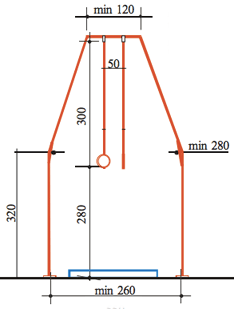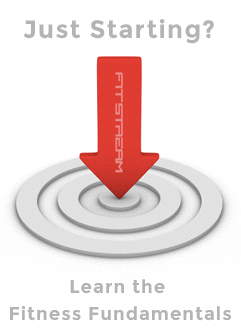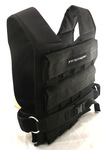This article is an exploration of Olympic ring training - an ancient sport that produces the strongest athletes in the world that seemingly break the laws of physics.
Gymnastics itself is one of the oldest Olympic sports, practiced by the ancient Greeks and first introduced to the Olympics in 1896. The exercises require almost incredible strength and flexibility but also call upon other primary physical skills such as coordination, agility and balance.
There are two main gymnastics events that involved the rings - the still rings and flying rings, as described below.
The sport of gymnastics is now split into three disciplines; artistic, rhythmic and trampoline with the still rings event belonging to men’s artistic gymnastics (across six total events comprising: floor exercise, pommel horse, still rings, vault, parallel bars, and high bar).
Women’s artistic gymnastics compete on four events of vault, uneven bars, balance beam, and floor exercise and excludes still rings (and the high bar and parallel bars) due to the intense upper-body strength required.
The flying rings event is no longer practiced at a competition level.
Still rings
The Still Rings is a gymnastics event featured in the Olympic Games that commands almost superhuman strength and sees some of the most highly disciplined athletes in the world take centre stage to demonstrate amazing levels of body control.
The gymnastics rings themselves are suspended 5.75 metres above the floor, on a strap connected to a wire cable bound to a metal frame. This setup gives enough room to freely hang, swing and dismount.
During a performance, athletes grip the rings and strive to keep them still and prevent swinging throughout, whilst demonstrating a routine exhibiting balance, strength, and power.
Still rings routines
Generally, a Still Rings routine is composed of swing, strength and hold elements with requirements such as a swing to held handstand, at least one static strength hold and an aerial dismount to round things off.
One of the most renowned strength ring exercises is the Iron Cross, with arms suspended straight out to the sides, supporting body weight and held for 2+ seconds. An international level rings routine should contain at least one element from all groups.
- Kip and swing elements (including to L-sit)
- Swings to handstand
- Swings to strength hold elements (not including L-sit)
- Strength elements and hold elements
- Dismounts
 Olympic ring dimensions
Olympic ring dimensions
The rings used for the Olympic sport are defined by FIG in the Apparatus Norms article, as below:
- Inner diameter of the rings: 18 cm (7.1 in) ± 0.1 cm (0.039 in)
- Total diameter of the rings: 23.6 cm (thickness 28 mm)
- Distance from attachment point to lower inner side of the rings: 300 cm (9.8 ft) ± 0.1 cm (0.039 in)
- Distance between the rings: 50 cm (1.6 ft) ± 0.5 cm (0.20 in)
Gymnastics scoring
The modern Olympic Games format has uniform grading structures with points system (refined in 2006 by the Fédération Internationale de Gymnastique (FIG)) introducing two separate scores for Artistic gymnastics. An A Score (or D Score) for difficulty, based upon the top 8 high scoring routines and the B Score (or E Score), for execution, relating to how well the skills are performed. Points are deducted from a starting score of 10.00 based on performance and the final score is calculated by taking deductions from the B Score and adding the result to the A Score.
With still rings specifically, gymnasts are deducted points for having bent arms during strength moves, using the straps for support or balance, and for excessive swinging during the routine.
Flying rings was a gymnastics event similar to the still rings except the athlete would swing on the rings whilst performing gymnastic movements. It’s an event that many find reminiscent of popular circus acts.
It’s unclear if flying rings was an actual event in the Olympics, although they were featured in National Collegiate Athletic Association (NCAA) and Amateur Athletic Union (AAU) competitions in the US until the early 1960s. The dangerous nature of flying ring training is often cited as a primary cause of the sport waning in popularity for professional contents.
The equipment used for flying rings was slightly different to that of still rings in which the apparatus would be suspended from a greater height (an extra 3 feet) to allow for large arcs of movement. The rings themselves also tended to be larger and heavier than traditional modern still rings.
Whilst not featured at competition level the flying rings have been a main attraction at Santa Monica Muscle Beach in California for decades. Performers can be seen exhibiting great skill with daring dismounts from large heights, traveling at speed.
Olympic ring gymnasts
The physiques of ring gymnastics are as equally impressive as the skills put on display, with high levels of muscular definition and classically proportioned bodies.
Shown below is a list of the latest Olympic gold medalists for still rings in gymnastics and a video of current Olympic champion Chen Yibing, from China in action.
As you can see, ring routines are so swift and precise so as to appear almost effortless, but these are truly elite athletes that possess incredible fitness skills that blend raw strength with both grace and elegance.
| Games | Gold winner | Country |
|---|---|---|
| 2012 London | Arthur Nabarrete Zanetti | Brazil |
| 2008 Beijing | Chen Yibing | China |
| 2004 Athens | Dimosthenis Tampakos | Greece |
| 2000 Sydney | Szilveszter Csollany | Hungary |
| 1996 Atlanta | Jury Chechi | Italy |
| 1992 Barcelona | Vitaly Scherbo | Unified Team |
Influences of Olympic ring training
The use of rings has spread from competitive gymnastics into gyms and homes around the world for strength and fitness pursuits.
Offering hundreds of possible exercises, specially designed fitness rings are being used by competent recreational trainers for building immense upper-body strength and definition.
Users aren’t just picking up something heavy, but supporting their entire bodyweight with the arms and manipulating it through various positions and transitions that require a huge amount of strength, balance and control.
Popular exercises include pull-ups, muscle-ups, push-ups, front levers, back levers and more which offer a lifetime of progression exercises and physical goals.
For more information check out our ring training articles and ring exercises.
References
- "Apparatus Norms" (PDF) URL: http://figdocs.lx2.sportcentric.com/external/serve.php?document=1540 Date: 08.July.2012
- "WAG Code of Points 2009-2012" (PDF) URL: http://figdocs.lx2.sportcentric.com/external/serve.php?document=1258 Date: 06.July.2012
- Artistic Gymnastics History at fig-gymnastics.com
- List of Olympic medalists in gymnastics (men) at Wikipedia.org










